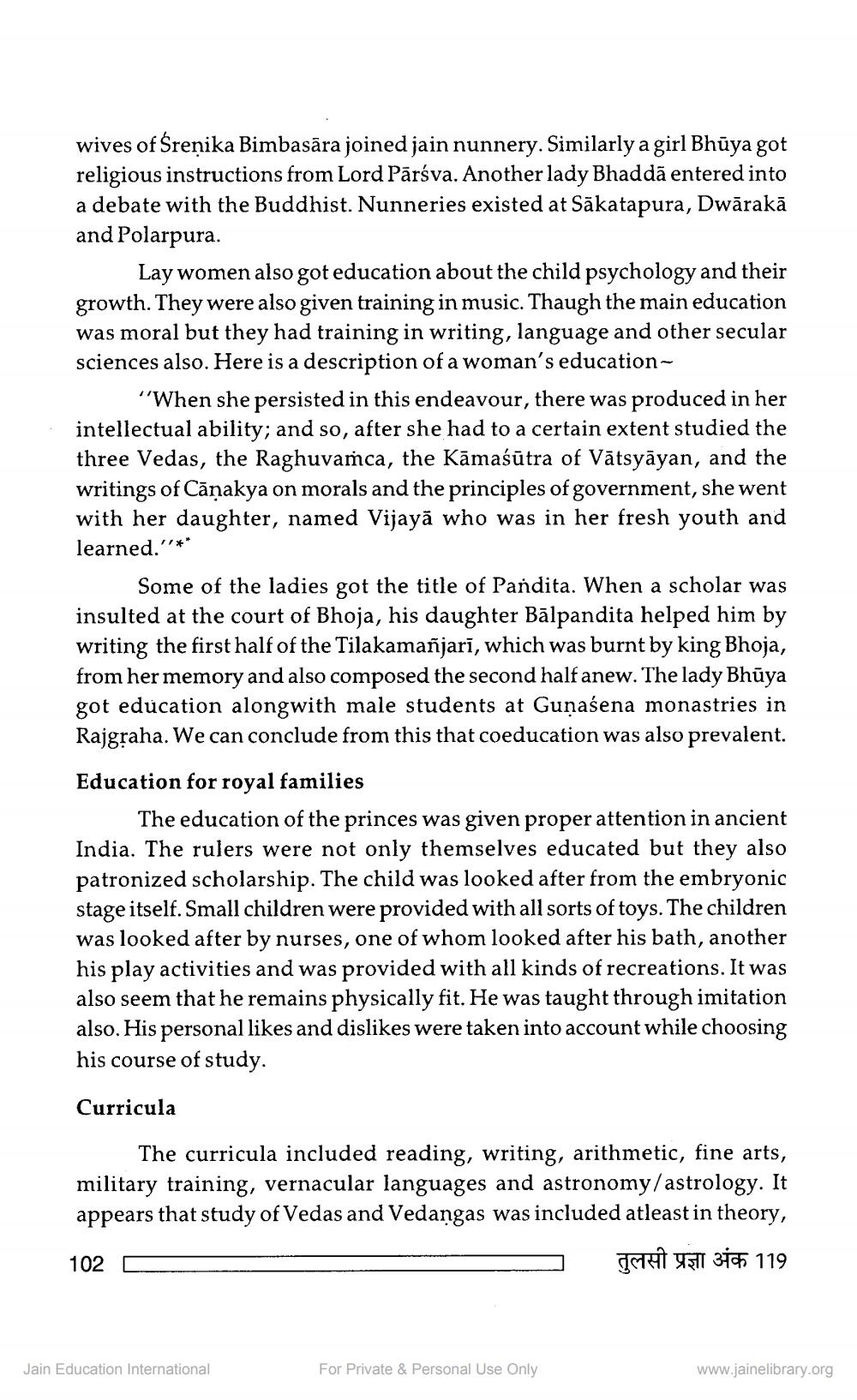________________
wives of Śrenika Bimbasara joined jain nunnery. Similarly a girl Bhūya got religious instructions from Lord Parsva. Another lady Bhadda entered into a debate with the Buddhist. Nunneries existed at Sākatapura, Dwārakā and Polarpura.
Lay women also got education about the child psychology and their growth. They were also given training in music. Thaugh the main education was moral but they had training in writing, language and other secular sciences also. Here is a description of a woman's education
"When she persisted in this endeavour, there was produced in her intellectual ability; and so, after she had to a certain extent studied the three Vedas, the Raghuvamca, the Kāmaśūtra of Vātsyāyan, and the writings of Cāṇakya on morals and the principles of government, she went with her daughter, named Vijayā who was in her fresh youth and learned."'**
Some of the ladies got the title of Pandita. When a scholar was insulted at the court of Bhoja, his daughter Bālpandita helped him by writing the first half of the Tilakamañjarī, which was burnt by king Bhoja, from her memory and also composed the second half anew. The lady Bhūya got education alongwith male students at Gunaśena monastries in Rajgraha. We can conclude from this that coeducation was also prevalent.
Education for royal families
The education of the princes was given proper attention in ancient India. The rulers were not only themselves educated but they also patronized scholarship. The child was looked after from the embryonic stage itself. Small children were provided with all sorts of toys. The children was looked after by nurses, one of whom looked after his bath, another his play activities and was provided with all kinds of recreations. It was also seem that he remains physically fit. He was taught through imitation also. His personal likes and dislikes were taken into account while choosing his course of study.
Curricula
The curricula included reading, writing, arithmetic, fine arts, military training, vernacular languages and astronomy/astrology. It appears that study of Vedas and Vedangas was included atleast in theory,
तुलसी प्रज्ञा अंक 119
102
Jain Education International
For Private & Personal Use Only
www.jainelibrary.org




